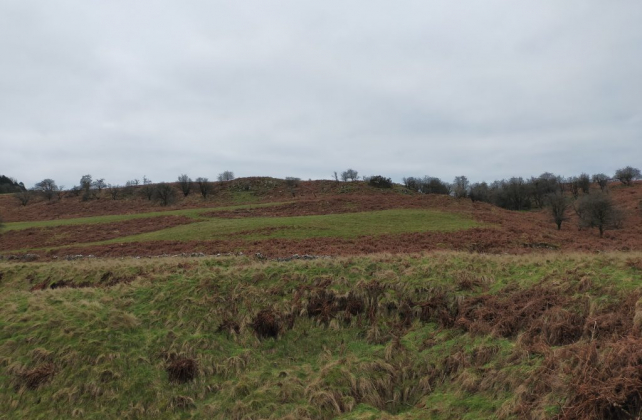Velvet Bottom. Now, there’s a name to conjure with. No-one knows how Velvet Bottom in Somerset came to get its moniker. However, one thing is for sure, this beautiful landscape has an incredible industrial past. Walk through the Velvet Bottom Somerset Wildlife Trust Nature Reserve today and it’s hard to believe the scale of lead mining which has taken place here. It’s incredible to think that the area was mined by the Romans over 2,000 years ago.
Velvet bottom somerset location
There are several ways to access Velvet Bottom nature reserve. One of these is via Cheddar Gorge. Head up the winding gorge road from Cheddar (which is stunning) and look for a parking place. If you fancy bagging a free spot in the laybys opposite one of the popular walks to Velvet Bottom, you’ll need to arrive early. Look for the National Trust sign for Black Rock.
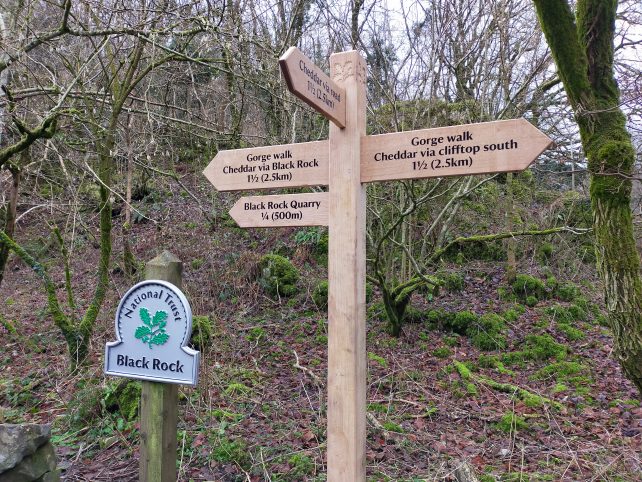
Nature
The initial path to Velvet Bottom is wide and relatively flat. It meanders past some stunning scenery. A little way down, you can bear to the right (follow the signpost to Charterhouse).
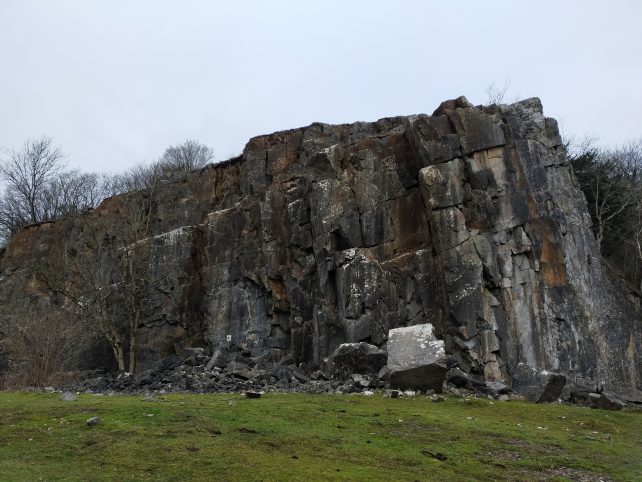
This takes you into Velvet Bottom nature reserve. While the high concentration of lead in the soil stops many plants from growing, there is so much to enjoy. Adders, bees, birds, butterflies and lizards thrive here. This Site of Special Scientific Interest and Special Area for Conservation is also home to a specialised community of plants such as meadow saffron, alpine pennycress and bladder campion which enjoy the difficult soil conditions.
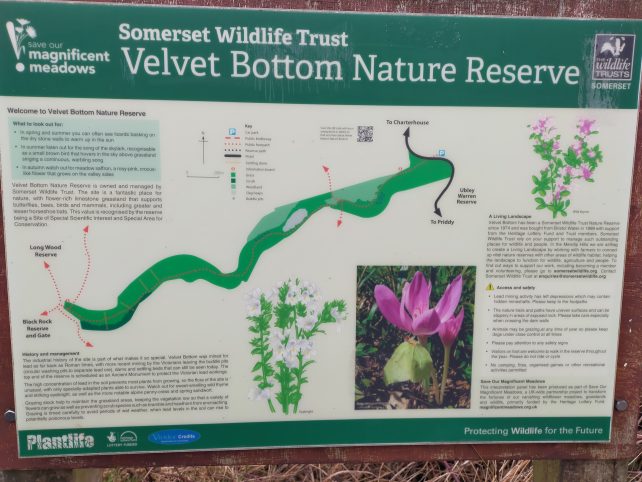
Timber Hole and Hangover Hole are two small caves situated near the valley path. These aren’t accessible and are gated off to prevent the underground area from being disturbed.
VELVET BOTTOM somerset HISTORY
Clues to Velvet Bottom’s industrial past are visible in the landscape. There are the remains of several dams. These were used to help prevent the local water supply from being contaminated as lead was mined. Not much is left of former smelting buildings and it is hard to imagine Velvet Bottom as a bleak, industrial area.
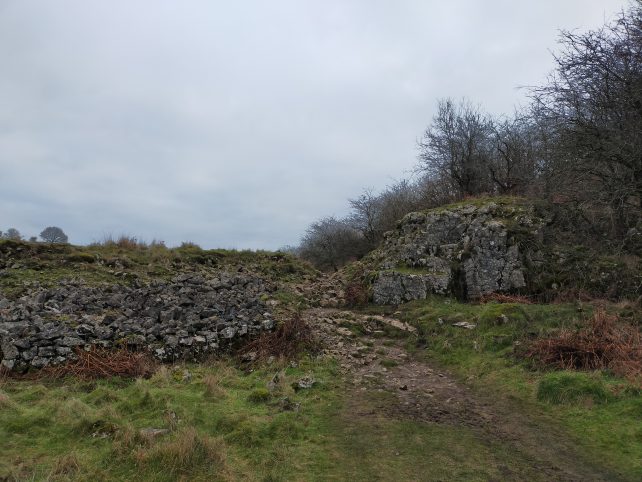
The large, circular depressions in the landscape are former buddle pits. The pits were used by the Victorians to separate the lead ore from limestone rock. To protect the Victorian lead workings, the far end of the reserve is scheduled as an Ancient Monument. Lead working only stopped here in the 1880s.
ON TO CHARTERHOUSE & BLACKMOOR
Continue walking and you will come to the Charterhouse / Blackmoor Reserve. (From Black Rock it’s around 1.7kms.) This is a nationally important archaeological and nature site. Lead was first discovered here by the Ancient Britons. (That’s before the Romans!) Lead could be found near to the surface, so only basic tools were needed to get to it.
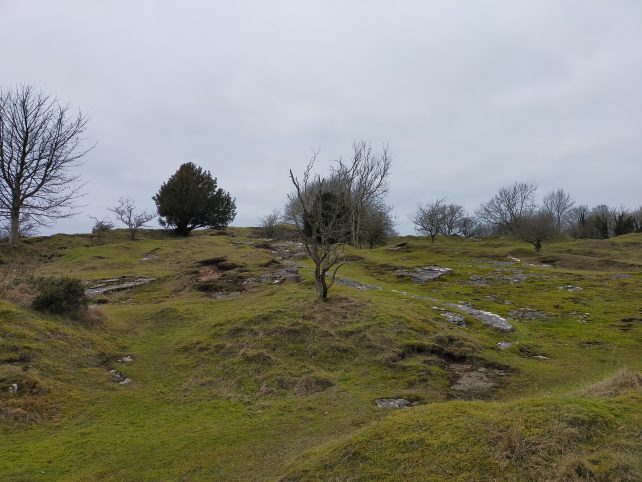
During the centuries, mining took place on an ever increasing scale. Around 150 years ago, the captain of the mines – Captain Harpur – resided at Bleak House (only ruins remain). He would have looked out on chimneys, a light railway and numerous industrial buildings. In the captain’s day, workers would be filling horse drawn carts destined for Bristol. The area is now classified as open country, so it can be explored (carefully) on foot. The site is managed by the Mendip Hills Area of Outstanding Natural Beauty.
While there are several hundred place names in England which contain the word ‘Bottom’, there is only one Velvet Bottom. Do take a look!
Find out more about;
Areas of Outstanding Natural Beauty in Somerset

